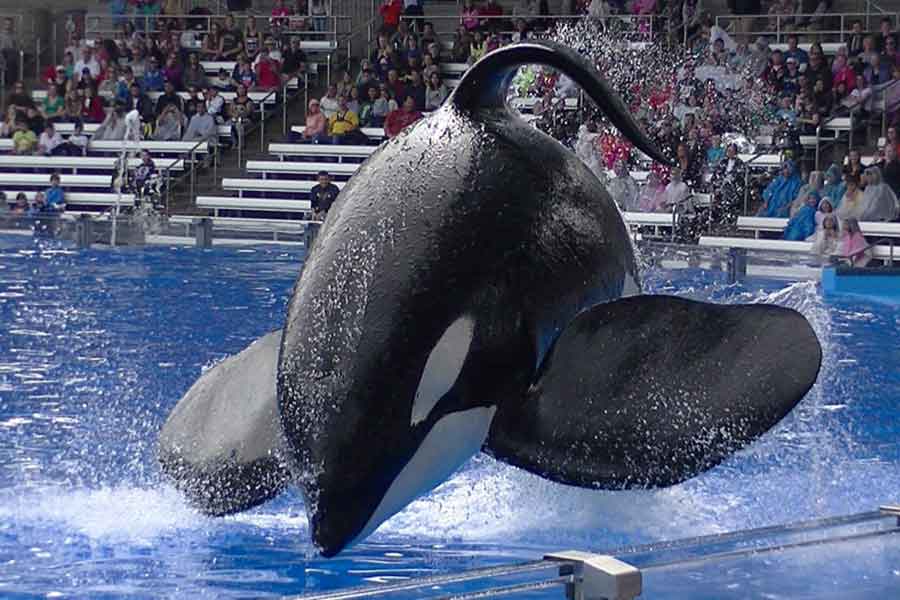
Until very recently, scientists believed that there was only one species of killer whale (Orcinus Orca). Today the existence of a new species known as «Aquarius Orca» is definitively accepted, whose common name would be «aquarium killer whale».
These strange animals have some substantial differences, the product of various mutations, with the orcas in the wild from which it is claimed that they come from. In the first place, the dorsal fin, which in the species known as «free killer whales» is upright and erect, appears in this new species drooping to one side with the appearance of having been fractured or suffering a permanent state of flaccidity.
In addition, «aquarium killer whales» seem to lack reproductive cycles since they never have young and this ends up completely distorting the concept of family in which their relatives «free killer whales» live. In any case, the large family would have no place in the small pools in which the new species is found. The «aquarium killer whales» also have a smaller eye than their free counterparts. Some studies agree that this may be directly related to the high chlorine content of its habitat.
On the other hand, «aquarium killer whales» exhibit strange and highly sophisticated behaviors such as hitting balls in the air or carrying humans on their backs. These behaviors may be explained by some kind of mental alteration produced by the incessant bouncing of high-frequency sounds from its echolocator off the concrete walls of the habitat. In addition, the caudal peduncle (tail base) of this new species suffers some degree of muscular atrophy.
Some scientists agree that this is caused by the fact that this species only eats dead fish and does not need to propel itself at speed like «free killer whales» to hunt. But another theory would explain this atrophy with the low degree of displacement of these individuals in relation to their free ancestors that live in a habitat of several hundred square kilometers. Finally, a characteristic of this new group is that their average life span is only 5 to 8 years while the «free killer whales» species has an average life span of 50 to 80 years.
Throughout the world, human groups have emerged willing to fight to achieve the definitive extinction of this new species. Some of them are so organized that their pages can be found on the Internet.
One of the best known Argentine groups is Fundación Cethus www.cethus.org
The individuals that make up these groups fight tirelessly to get governments to change the laws that protect «aquarium orcas» ensuring that if they are released, they would undergo a new mutation almost instantaneously that would lead them to become «free orcas» again.
«You can’t defend what you don’t love and you can’t love what you don’t know»

